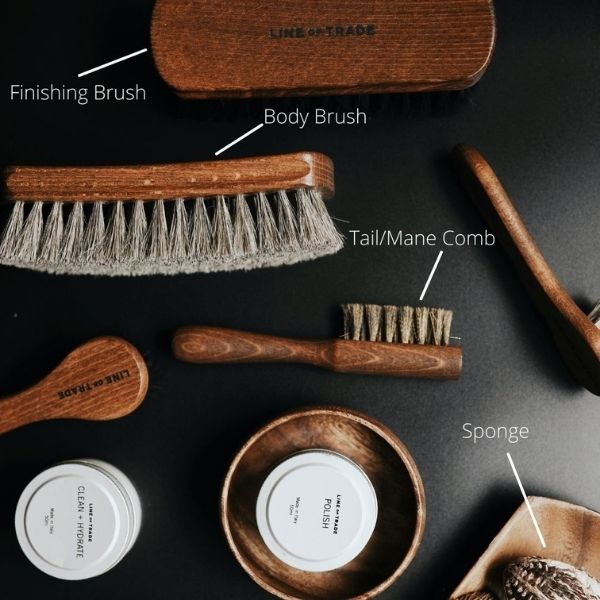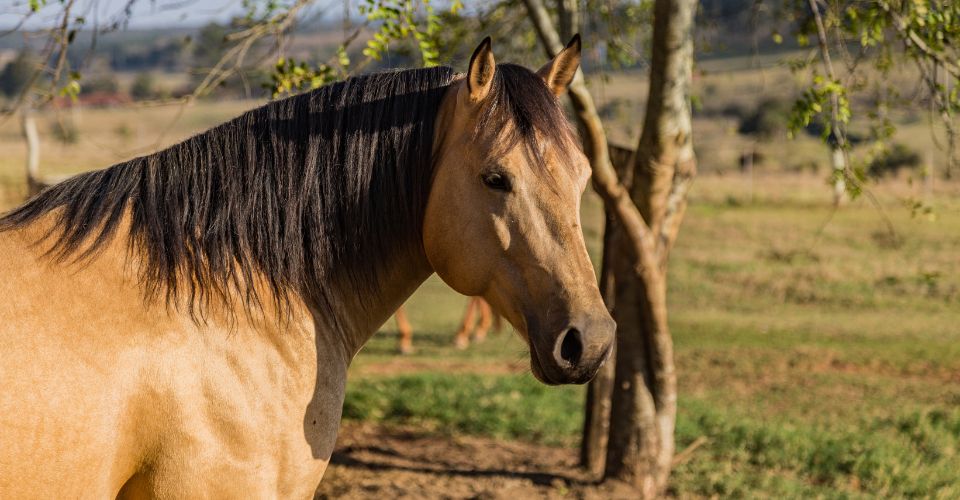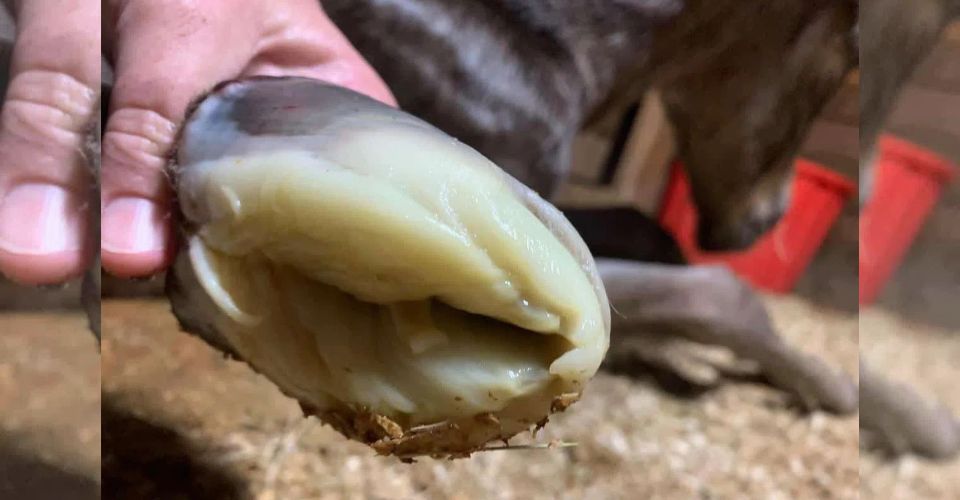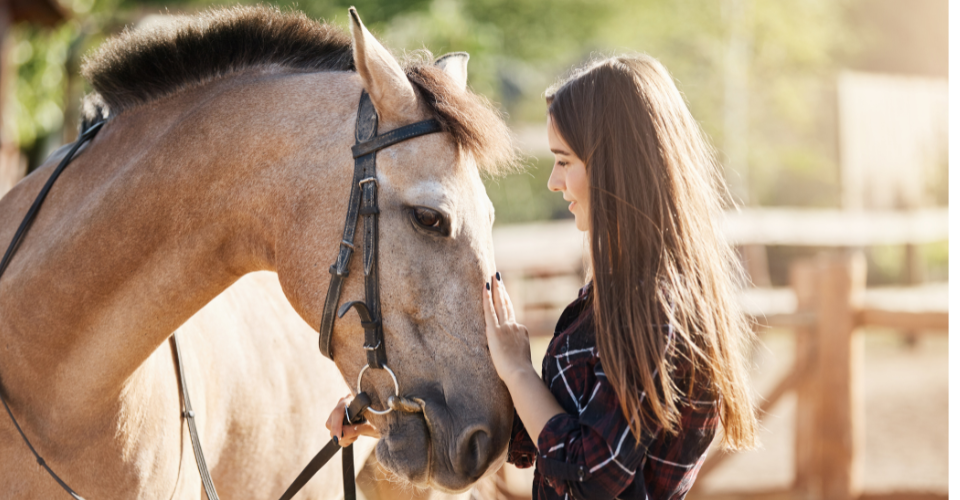Horses are courageous, amiable, and have been true-blue companions of humans since time immemorial. But keeping this loyal companion always require dedication on the part of the owners. Apart from horse food and healthcare, horses needs regular grooming. Grooming a horse not only helps him stay clean and healthy but also strengthens the bond between the owner and the horse.
Grooming horses’ hair, hooves, and coats provide you an opportunity to check for irritations or external wounds. Ideally, there should be a grooming session at least once per day—if it’s time-consuming, clean at least the horse’s hooves before and after riding.
To begin with the grooming, you need a horse grooming kit comprising of different tools and brushes. The bucket is the most convenient way to organize these tools, although many grooming boxes are available in the market for keeping the tools handy and organized.
Before you start grooming, these are the few things that you should keep in your mind.
- Use easy-to-use and soft tools to avoid discomfort as much as you can.
- Don’t place the grooming box or bucket close to the horse; they might knock it over.
- Safely and securely tie the horse with a quick-release knot to avoid any problem.
So, what are the tools required in a horse grooming kit?
Paraphernalia in a Horse Grooming Kit
Given below is the list of a few basic necessary tools horse grooming kit must have.
- Scissors or clippers
- Body brush (fairly stiff bristles)
- Grooming spray
- Hoof pick
- Grooming mitt
- Hoof ointment
- Finishing brush (soft bristles)
- Tail and mane comb (prefer plastic over metal brush)
- Clean sponge

Horse Grooming Method
Now that we have a perfect horse grooming kit, let’s delve into how to groom a horse.

Grooming a Horse
Step 1: Safely Tie Your Horse
Horses have a natural need to move their feet around; however, some are trained to stand still while grooming. Therefore, it is necessary to tie them above their withers with a pole or a ring.
It is often recommended to use a quick-release knot while tying your horse, as he usually tries to escape while pulling the rope with all his force which can break his neck.
To grapple with such conditions, a marlinspike should be included in the grooming kit. It loosens the knot quickly or cuts the rope in case of an emergency.
Step 2: Picking Horse Hooves
It is advised that the person who interacts frequently with the horse should do the grooming. The horse will easily lift his foot if he is comfortable with the person.
But if he resists, squeeze his leg with one hand and use the other one to pick the foot. Start picking hooves from the heel forward to the toe by using a hoof pick. Pick out all the dirt, grit, or manure lodged in the hooves. Horses have a frog- or v-shaped part of the hoof, and it is necessary to clean the hooves from all sides.
But remember, you should neither dig the hooves deeply nor pick the frog-shaped part.
While picking the hooves, it is necessary to keep a regular check on the horse frog; unhealthy frogs will be squishy, smelling, and all black.
The best time to pick hooves is before and after a ride, and removing all the stones or other objects can cause bruising and disturb the horse’s capacity to run.
It also prevents horses from thrush—a black fungus that develops around the frog.
Step 3: Remove Loose Hair by Using Curry Comb
The curry comb is made up of rubber. It is used to remove the dirt and loosen up hair and bits of things caught in the horse coat.
While using the curry brush, you need to keep in mind things below:
- Always use a curry brush in a circular motion.
- Be careful while using curry brush on bony areas like the spine, face, and legs.
- Start brushing from one side of the horse, from the neck to the barrel, and then the horse’s rump. And then repeat the same procedure on the other side of the horse.
Step 4: Remove Dirt from the Horse Body Using Dandy Brush
A dandy brush is a bristled brush used to remove the hair and dirt from a horse’s body. Followed by curry comb, dandy removes dirt, but it pulls out the things entangled within the horse’s hair with its bristles.
Start using the dandy brush from the neck toward the tail—the direction in which hair grows. It is a body brush only and cannot be used on the mane, tail, face, and legs of horses.
Step 5: Remove Dirt from the Face Using Soft Brush
Like a dandy brush is for the body, a soft brush is used for the horses’ face and other delicate parts.
But still, you need to be gentle and careful around the ears, muzzle, and eyes. It removes the remaining dirt and hair on the horse’s face and body.
Soft brushes are specially designed for the face, making its cleaning easier.
Step 6: Cleaning Horse Face by Using Sponge or Cloth
After removing the dirt with a soft brush, a damp sponge or cloth is used to wipe the nose and eyes of horses.
Keep separate cloths or sponges for the face and dock area, and eyes. As dock area is constantly moist and dirty, and the eyes are sensitive and can get infected easily.
As infections like ringworm can be spread by sharing grooming kits, it is best to use different sponges for every horse.
Step 7: Clean the Tail and Mane
A wide bristle mane comb is used to get the tangles out of the tail and mane.
The best practice to brush the mane and tail is: Before using a brush, try to detangle the hair with your fingers, and after that, take the small section of hair in one hand and use the other to brush it out.
Then, continue taking small sections until the whole tail and mane hair is brushed.
Before brushing, you can use different hair products—all-natural tail/mane spray. Other than helping with detangling, it will make the hair shiny and moisturizing.






